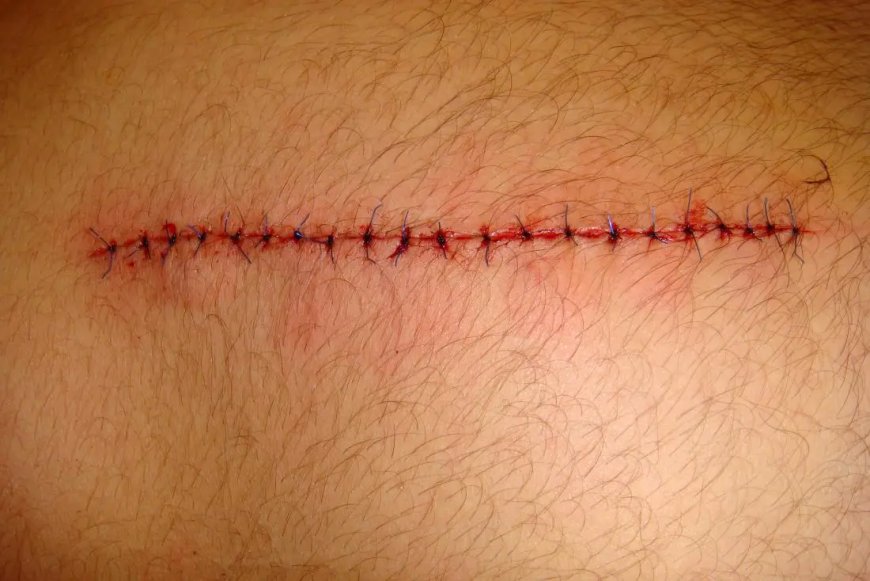Pain Levels During Stitch Removal: A Comprehensive Guide

If you’ve had stitches before, you may be wondering about the pain associated with their removal. “Is stitch removal painful هل إزالة الغرز مؤلمة ?” is a common question, and understanding what to expect can help alleviate anxiety surrounding the procedure. This comprehensive guide explores the pain levels during stitch removal, the factors that influence these levels, and tips to manage any discomfort.
The Basics of Stitch Removal
Stitch removal is a routine procedure performed by healthcare providers to help promote healing after surgery or injury. While the primary purpose of stitches is to keep the skin or tissues together, they must be removed once the body has adequately healed. The removal process is generally quick, but patients often have concerns about the associated pain.
What to Expect During Stitch Removal
-
Initial Assessment: Before the removal, your healthcare provider will examine the wound to ensure that it is healing well. This assessment helps them determine whether it’s the right time to remove the stitches.
-
The Removal Process: The actual procedure typically involves the use of sterile scissors and tweezers. The provider will carefully cut the stitch and gently pull it out. This process usually takes only a few minutes.
-
Pain Levels: Many patients report that the pain associated with stitch removal is minimal. However, experiences can vary depending on several factors, which we will explore later in this guide.
Pain Levels: What Research Says
Research indicates that the majority of patients experience mild discomfort during stitch removal. A study published in the Journal of Clinical Surgery found that most individuals rated their pain as low, often describing it as a slight tugging or pulling sensation rather than sharp pain.
- Patient Surveys: Surveys conducted on stitch removal experiences show that approximately 80% of participants reported little to no pain. Those who did experience discomfort often described it as manageable.
Factors Influencing Pain Levels
-
Location of Stitches: The sensitivity of the area where stitches are placed significantly affects pain levels. Stitches on more sensitive areas, such as the face or joints, may cause more discomfort than those on less sensitive areas like the arms or legs.
-
Type of Stitches: Different stitches can create varying sensations during removal. Non-absorbable stitches, which require removal, may feel different than absorbable stitches that dissolve naturally.
-
Patient Anxiety: Anxiety about the procedure can heighten the perception of pain. Patients who are nervous or fearful may report greater discomfort compared to those who are calm and prepared.
-
Provider Experience: The technique and experience of the healthcare provider can influence how painful the removal process is. An experienced provider can perform the procedure quickly and efficiently, reducing discomfort.
-
Pain Tolerance: Every individual has a unique pain threshold. Some may feel slight discomfort, while others might experience more significant sensations during the removal process.
What Patients Say About Pain Levels
Real-life patient experiences can offer valuable insights into what you can expect during stitch removal:
- “I was really nervous about how much it would hurt, but it was honestly just a tiny pinch. I barely felt anything!”
- “The nurse was very gentle and talked me through the process, which made it so much easier. I was surprised at how quick it was.”
- “I had stitches on my arm, and while I felt a bit of pressure, it was nothing compared to what I expected.”
These testimonials highlight a common theme: while there may be some discomfort, most people find the process to be manageable.
Tips to Minimize Discomfort During Stitch Removal
-
Communicate with Your Provider: Before the procedure, discuss any concerns you have about pain with your healthcare provider. They can help alleviate your fears and provide reassurance.
-
Consider Pain Management Options: If you’re particularly anxious about pain, ask your provider if they can use local anesthesia or a numbing cream before the stitches are removed. This can help minimize discomfort.
-
Relaxation Techniques: Practicing deep breathing or visualization techniques can help calm your nerves and reduce anxiety about the procedure.
-
Bring a Support Person: Having a friend or family member accompany you can provide emotional support and help distract you during the removal process.
-
Follow Aftercare Instructions: After the stitches are removed, your provider will likely give you aftercare instructions. Following these guidelines can promote healing and minimize discomfort post-removal.
After Stitch Removal: What to Expect
-
Post-Removal Sensations: It’s normal to experience some tenderness or soreness in the area after the stitches are removed. This discomfort should subside within a few hours to a couple of days.
-
Watch for Complications: While stitch removal is generally safe, be alert for any signs of complications, such as increased pain, swelling, or redness at the site. If you notice any unusual symptoms, contact your healthcare provider.
Debunking Myths About Stitch Removal Pain
-
Myth: Stitch Removal Is Always Painful: Many people fear that stitch removal is a painful process. However, as discussed earlier, most patients report mild discomfort, and many describe it as manageable.
-
Myth: Strong Pain Medication Is Necessary: Most individuals do not require strong prescription pain medications for stitch removal. Over-the-counter pain relievers are typically sufficient for managing any mild discomfort.
-
Myth: All Stitches Hurt to Remove: The type and placement of stitches can significantly impact the experience. Skilled providers can often minimize discomfort through effective techniques.
Conclusion
In conclusion, understanding pain levels during stitch removal can significantly alleviate concerns about the procedure. While individual experiences may vary, most patients find that the discomfort is manageable and short-lived. By preparing adequately, communicating with your healthcare provider, and employing relaxation techniques, you can approach stitch removal with confidence.

 saroosh
saroosh